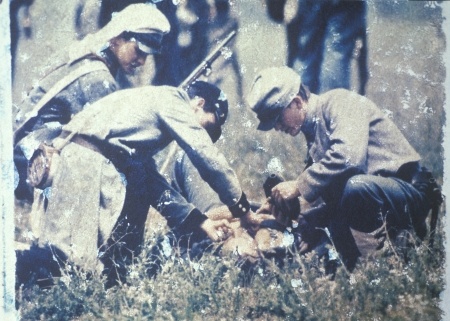On April 29, I had a right half-knee arthroplasty. The procedure was done with epidural anesthesia and some additional propofol. I requested a minimal dose of the latter so that I could be more or less awake during the procedure — which happened — and I remember hearing the electric saw doing its thing and also apparently a mallet and chisel. The procedure went smoothly and with dozens of people taking care of me in the hospital, and several more from home health care, I am making a good recovery ahead of schedule.
What a contrast from Civil War medicine! If you have ever been to a Civil War battlefield, you may have seen what passed for a hospital then. At the Battle of Bull Run I believe it was a little one-room schoolhouse that was pressed into service by the Union army. The “service” consisted mainly of a surgeon with a saw who knew how to separate limbs from injured soldiers. Anesthesia was a stiff shot of whiskey and some helpers to hold the screaming patient immobile.
How the patient was sewed up didn’t attract much attention in the few books on the subject, but the suturing and dressing had to have been pretty primitive. If the patient was lucky, he was transferred to an “ambulance” for a very bumpy trip back to Washington or wherever and a “respectable” hospital. Pictures show some of these hospitals to have been large tents with hundreds of bunks lined up cheek by jowl.
How anyone could have survived this level of care boggles the bean, but thousands did from all accounts. The alternative to surgery they learned early, was likely to be gas gangrene with certain death. Why this nasty bacterial infection? Those noxious Clostridium spore formers lived largely in the guts of horses. And horses — the engines of the Civil War — were ubiquitous. They contaminated the soil and the soil contaminated soldiers.
I once did an autopsy on a case of gas gangrene. The man had been kicked on the shin by a horse with an injury that just barely broke the skin. When crepitation was first detected around the knee, a hindquarter amputation was performed immediately. The patient still showed up in the morgue a couple of days later. Makes one a believer in the power of Clostridium.
So, how did those survivors survive? They must have been some tough dudes!
There’s an interesting audio quiz and history lesson on the Public Radio International website about first responders and the Civil War. Have a listen here.

